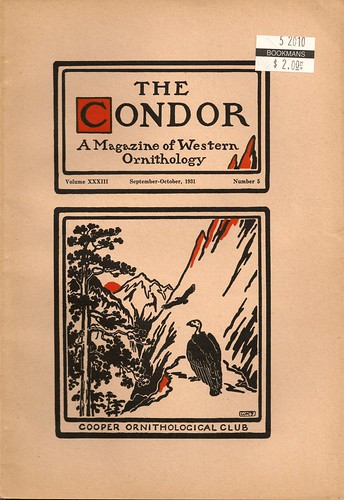
The Condor is still around today, but it's changed a bit. The scope has expanded beyond the North America and it's now a peer-reviewed academic journal; it's edited by Michael A. Patten, who's a professor in the Oklahoma Biological Survey at the University of Oklahoma, amongst other things. The Cooper Ornithological Club has become the Cooper Ornithological Society.
Since its inception, The Condor has promoted bird conservation. Considering the environmental changes and urban sprawl throughout the West over the last 111 years, I'm sure Chester Barlow and the original writers had more birds to see than we do now in habitats that no longer exist. It got me thinking about what's been lost and what was never discovered. We tend to think of science as absolute, plodding, and, in some ways, interminable. We learn new things all the time. Yet, we're destroying things all the time, so we must be destroying things before we know about them at all, let alone understand them scientifically. Older scientific publications, like back issues of The Condor, seem dated. "We've come a long way since then" is a scientific truism. But eighteenth, nineteenth, and early twentieth century naturalists were looking at things that no longer exist, things we have no way to observe now, and I wonder when a field of study will emerge dedicated solely to reevaluating former research. It's terrifying to envision this as the future of ornithology, zoology, or naturalism...


No comments:
Post a Comment